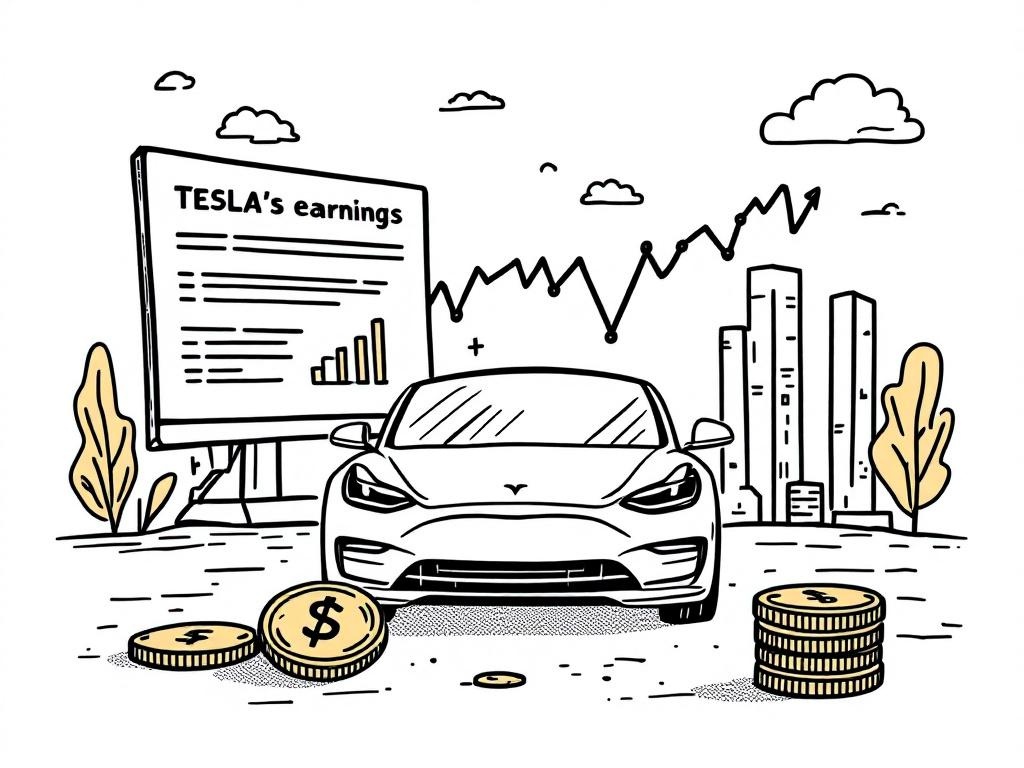Tesla's Revenue Bounces Back, But Stock Slips After Earnings Report

Palo Alto, Wednesday, 22 October 2025.
Tesla’s Q3 2025 revenue surged by 12% to $28.1 billion, surpassing forecasts, yet missed EPS expectations, leading to a 2% stock dip. Investor focus remains on Tesla’s strategic plans.
Earnings Overview
Tesla, Inc. (TSLA) reported a robust 12% increase in revenue for the third quarter of 2025, reaching $28.1 billion, which exceeded Wall Street’s expectations of $26.37 billion [1][2]. Despite this revenue growth, the company’s earnings per share (EPS) fell short of analyst predictions, coming in at $0.50 compared to the expected $0.54 [1][3]. This shortfall in EPS led to a 2% decline in Tesla’s stock during after-hours trading on the day of the report [1][4].
Revenue Growth Amid Challenges
Tesla’s Q3 2025 automotive revenue increased by 6% to $21.2 billion, up from $20 billion in the same quarter the previous year [1]. However, the company’s net income decreased by 37% to $1.37 billion, or $0.39 per share, from $2.17 billion, or $0.62 per share, a year earlier, reflecting the challenges Tesla faces in maintaining profit margins [2][3]. Moreover, Tesla’s revenue from automotive regulatory credits fell significantly by 44% to $417 million, contributing to the pressure on its financial results [1].
Market Reaction and Investor Sentiment
The market’s reaction to Tesla’s earnings report highlights the ongoing concerns among investors regarding the company’s strategic outlook and competitive positioning in the electric vehicle (EV) market. As Tesla transitions to more affordable versions of its Model Y SUV and Model 3 sedan, margins have been impacted, causing apprehension among shareholders [2][4]. These price adjustments are intended to make Tesla’s products more accessible following the expiration of the EV tax credit in the U.S. on 30 September 2025 [1][3].
Future Prospects and Strategic Plans
Looking ahead, Tesla aims to start volume production of its Cybercab, heavy-duty electric Semi trucks, and new battery energy storage system, called Megapack 3, in 2026 [1]. The company is also building first-generation production lines for its humanoid Optimus robots, which are expected to play a significant role in Tesla’s future growth strategy [3]. Despite these ambitious plans, the company faces near-term uncertainties due to shifting trade policies and fiscal changes, which could affect its supply chains and cost structures [4].